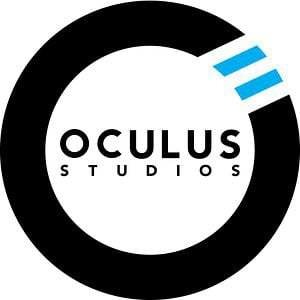Oculus VR
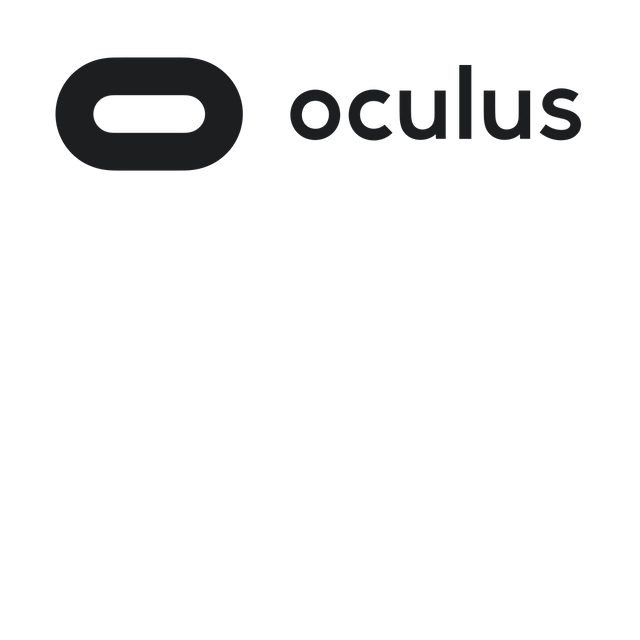
Oculus VR

Formerly | Oculus VR, LLC (2012–2018) |
|---|---|
Type | Division |
| Industry | Virtual reality |
| Founded | July 2012 (2012-07)in Irvine, California, U.S. |
| Founders |
|
| Headquarters | Menlo Park, California ,U.S. |
Area served | Worldwide |
Key people | |
| Products |
|
| Services | Oculus Store |
| Parent |
|
| Subsidiaries | Oculus Studios |
| Website | oculus.com [81] |
Oculus VR is an American technology company founded by Palmer Luckey, Brendan Iribe, Michael Antonov, Jack McCauley and Nate Mitchell in July 2012 in Irvine, California, now based in Menlo Park. It specializes in virtual reality hardware and software products.
In April 2012, Luckey announced the Rift, a virtual reality headset designed for video gaming, and launched a Kickstarter campaign in August to make virtual reality headsets available to developers. The campaign proved successful and raised $2.4 million, ten times the original goal of $250,000. Two pre-production models were released to developers; the Oculus VR DK1 (Development Kit 1) and Oculus VR DK2 (Development Kit 2). The consumer product was released on March 28, 2016 with an all-new design incorporating specialized VR displays, positional audio, and infrared tracking system.
In March 2014, Facebook CEO Mark Zuckerberg agreed to acquire Oculus VR for US$2.3 billion in cash and stock.[2][3][4] In 2015, Oculus VR acquired Surreal Vision, a British startup focused on 3D reconstruction and mixed reality, stating that it could be possible for Oculus VR to develop products with the concept of telepresence.
Formerly | Oculus VR, LLC (2012–2018) |
|---|---|
Type | Division |
| Industry | Virtual reality |
| Founded | July 2012 (2012-07)in Irvine, California, U.S. |
| Founders |
|
| Headquarters | Menlo Park, California ,U.S. |
Area served | Worldwide |
Key people | |
| Products |
|
| Services | Oculus Store |
| Parent |
|
| Subsidiaries | Oculus Studios |
| Website | oculus.com [81] |
History
Founding
As a head-mounted display (HMD) designer at the University of Southern California Institute for Creative Technologies, Palmer Luckey earned a reputation for having the largest personal collection of HMDs in the world, and was a longtime moderator in Meant to be Seen (MTBS)'s discussion forums.[8]
Through MTBS's forums,[9] Palmer developed the idea of creating a new head-mounted display that was both more effective than what was currently on the market and was also inexpensive for gamers. To develop the new product, Luckey founded Oculus VR with Scaleform co-founders Brendan Iribe and Michael Antonov,[10] Nate Mitchell and Andrew Scott Reisse.[11]
Coincidentally, John Carmack of id Software had been doing his own research on HMDs and happened upon Palmer's developments as a fellow MTBS member.[12] After sampling an early unit, Carmack favored Luckey's prototype and just before the 2012 Electronic Entertainment Expo (E3), id Software announced that their future updated version of Doom 3, Doom 3 BFG Edition, would be compatible with head-mounted display units.[13]
During the convention, Carmack introduced a duct taped head-mounted display, based on Palmer's Oculus Rift prototype, which ran Carmack's own software. The unit featured a high speed IMU and a 5.6-inch (14 cm) LCD, visible via dual lenses that were positioned over the eyes to provide a 90 degree horizontal and 110 degree vertical stereoscopic 3D perspective.[14][15] Carmack later left id Software as he was hired as Oculus VR's Chief technology officer.[16]
Funding for Oculus Rift and company
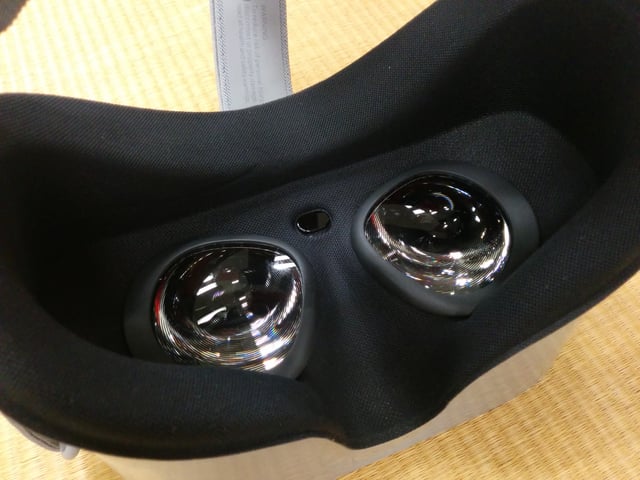
Lenses inside an Oculus headset
Following the demonstration of the Oculus Rift prototype at E3 in June 2012, on August 1, 2012, the company announced a Kickstarter campaign to further develop the product. Oculus announced that the "dev kit" version of the Oculus Rift would be given as a reward to backers who pledged $300 or more on Kickstarter, with an expected shipping date set of December 2012 (though they did not actually ship until March 2013).[17]
There was also a limited run of 100 unassembled Rift prototype kits for pledges over $275 that would ship a month earlier. Both versions were intended to include Doom 3 BFG Edition, but Rift support in the game was not ready, so to make up for it they included a choice of discount vouchers for either Steam or the Oculus store.[18] Within four hours of the announcement, Oculus secured its intended amount of US$250,000,[19][20] and in less than 36 hours, the campaign had surpassed $1 million in funding,[21] eventually ending with $2,437,429.[22]
On December 12, 2013, Marc Andreessen joined the company's board when his firm, Andreessen Horowitz, led the $75 million Series B venture funding.[23] In total, Oculus VR has raised $91 million with $2.4 million raised via crowdfunding.[18]
Facebook acquisition and chief scientist
Although Oculus VR had only released a development prototype of its headset, on March 25, 2014, Mark Zuckerberg announced that Facebook would be acquiring Oculus VR for US$ 2 billion, pending regulatory approval. The deal includes $400 million in cash and 23.1 million common shares of Facebook, valued at $1.6 billion, as well as additional $300 million assuming Facebook reaches certain milestones.[2][3][4] This move was ridiculed by some backers who felt the acquisition was counter to the independent ideology of crowdfunding.[24]
As of January 2015, the Oculus VR Headquarters has been moved from Irvine, California to Menlo Park, California, where Facebook's Headquarters is also located. Oculus has stated that this move is for their employees to be closer to Silicon Valley.[28]
Partnership with Samsung
In 2014, Samsung partnered with Oculus to develop the Gear VR, after the success of the then-in-development Rift.[29]
On November 20, 2015, the consumer edition of the Gear VR was released to the public, and sold out during the first shipments. The device supported the Samsung Galaxy Note 5, Samsung Galaxy S6, Samsung Galaxy S6 Edge, Samsung Galaxy S6 Edge+, and later, the Samsung Galaxy S7, and Samsung Galaxy S7 Edge.[32]
Further expansion
In May 2015, Oculus acquired British company Surreal Vision, a company based on 3D scene-mapping reconstruction and augmented reality. News reported that Oculus and Surreal Vision could create "mixed reality" technology in Oculus' products, similar to the upcoming HMD, Microsoft HoloLens.[33] They reported that Oculus, with Surreal's help, will make telepresence possible.[34]
On December 28, 2016 media reported that Facebook Inc., the parent company of Oculus, has acquired the Danish startup The Eye Tribe for an undisclosed amount. The company delivers eye tracking technology used to improve virtual reality user experience and has developed foveated rendering, a technology that only renders at the highest resolution where the user is looking. A lower resolution is used further away from the center of the visual field, reducing computation time.[35]
In September 2018, Oculus VR became a division of a new structural entity within Facebook known as Facebook Technologies.[36] Facebook announced in August 2018 they had entered negotiations to lease the entire Burlingame Point campus in Burlingame, California, then under construction.[37] The lease was executed in late 2018, and the site, owned by Kylli, a subsidiary of Genzon Investment Group, is expected to be complete by 2020.[38] Oculus is expected to move to Burlingame Point when development is complete.[39]
On August 13, 2019, Nate Mitchell, Oculus co-founder and VP of product announced his departure from the company.[40]
ZeniMax v. Oculus
Following Facebook's acquisition of Oculus VR, ZeniMax Media, the parent company of id Software and John Carmack's previous employer, sought legal action against Oculus, accusing the company of theft of intellectual property relating to the Oculus Rift due to Carmack's transition from id to Oculus. The case, ZeniMax v. Oculus, was heard in a jury trial in the United States District Court for the Northern District of Texas, and their verdict was reached in February 2017, finding that Carmack had taken code from ZeniMax and used it in developing the Oculus Rift software, violating his non-disclosure agreement with ZeniMax, and Oculus' use of the code was considered copyright infringement. ZeniMax was awarded $500 million in the verdict, and both ZeniMax and Oculus are seeking further court actions.[41][42]
Products
Samsung Gear VR
In November 2015 Oculus VR and Samsung released Samsung Gear VR.
First generation
On Oculus Connect 2018, Zuckerberg revealed that the Oculus Rift, the Oculus Go and the Oculus Quest are considered to be the company's first generation of products, expecting new iterations of the three to be developed for a second generation of the company's technology.[43]
Oculus Rift
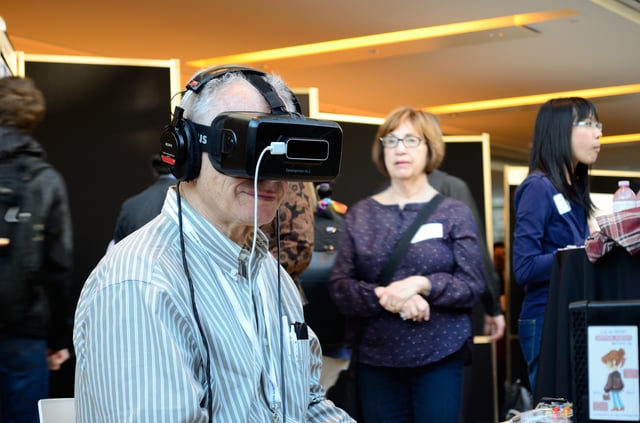
Oculus Rift DK2 worn at a research showcase (Leap Motion sensor attached to the front)
The Oculus Rift is a virtual reality head-mounted display. Software, most notably video games, must be custom programmed to use the Rift. Developer kit preorders were made available for $300 through Oculus VR's website starting on September 26, 2012. These kits sold at a rate of 4–5 per minute for the first day, before slowing down throughout the week.[44] In March 2014 at GDC, Oculus announced the upcoming Devkit 2 (DK2) which they expected to begin shipping in July 2014.[45]
In January 2016 at CES 2016, Oculus announced it will start shipping the Oculus Rift headset to customers in 20 countries on March 28, and it will cost $599.[46] In January 2016, as a gesture of appreciation, Oculus announced it will give the 6,855 people who participated in the 2012 Kickstarter project a special-edition Oculus Rift one day before the new product goes on sale to the public on March 28, 2016.[47] Oculus Touch motion controllers officially launched on December 6, 2016 for $199. Touch motion controllers had 53 game options at launch. Oculus Rift Earphones also started delivery on December 6, 2016 for $49.[48]
Oculus Go
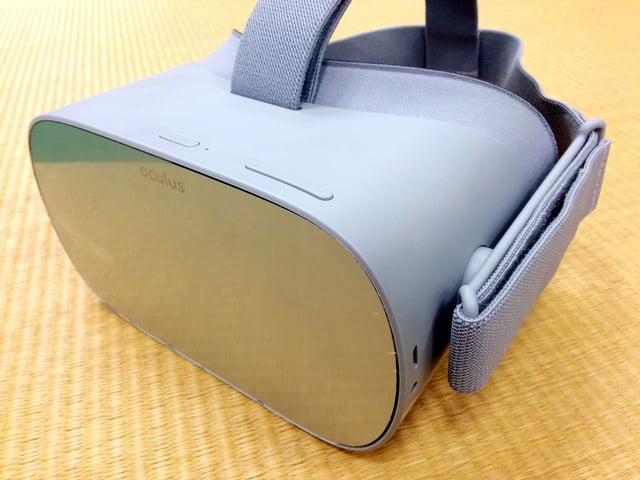
Oculus Go headset
On October 11, 2017 Oculus announced a stand-alone VR Headset named "Oculus Go".[51][52] Oculus developed Oculus Go in partnership with Qualcomm, large US mobile SoC designer, and Xiaomi, China's largest smartphone maker.[53] In partnership with Oculus, Xiaomi launched a rebranded version of the headset called Xiaomi Mi VR aimed specifically at the Chinese market.[54]
Like the Samsung Gear VR and Google's Daydream, the device is not tethered to a computer and it does not require a gaming system to work. It only consists of a headset but the device is not powered by a smartphone.[55] The headset is outfitted with a 5.5-inch 2560 x 1440 resolution display, higher-quality fresnel lenses used in Oculus Rift and is based on Qualcomm's Snapdragon 821 processor.[55] It has 3 degrees of freedom tracking[56] and a small controller that can be moved like a laser pointer.[55] Oculus Go has two storage configurations available, with 32GB of internal storage for $199 USD or 64GB of internal storage for $249 USD.[57] The headset has built-in surround sound with two spatial audio speakers, and a 3.5 mm headphone jack for stand-alone headphones.[57] Although the Go may be worn with or without glasses, the Go offers third party prescription lenses fitted for the headset for $79.99.[58]
While official sales numbers haven't been released, according to IDC the Oculus Go and Xiaomi Mi VR had sold nearly a quarter million units combined during the third quarter 2018,[59] and in January 2019 market analysis firm SuperData estimated that over a million Oculus Go units had been sold since the device's launch.[60] In his keynote at 2018's Oculus Connect developer conference, John Carmack revealed that the Go's retention rate was as high as the Rift's, something that nobody at the company had predicted.[61] Carmack also noted that the Go had done especially well in Japan despite the device's lacking internationalization support and the company not specifically catering to the Japanese market.[62]
Oculus Rift S
On March 20 2019, Oculus VR announced a new virtual reality head-mounted display, the Oculus Rift S. The device was released in March 20, 2019, priced at 400 USD; the same pricing as the original Rift, and was intended as a replacement for it, which would be phased out soon after the Rift S was released. The new Rift S requires a PC like the original Rift does, and all games available for the original Rift should work seamlessly on the Rift S. Despite the similarities, the Rift S is a completely new headset with different hardware, featuring inside-out tracking and different controllers.[63][64]
Oculus Quest
On September 26, 2018 Oculus VR announced a stand-alone virtual reality headset named "Oculus Quest",[65] which launched at retail on May 21, 2019.[66] The device uses the same Oculus Touch motion controllers used in the Oculus Rift S, and features displays with a resolution of 1600 x 1440 per eye, and an option to adjust the lens spacing. Launch price was 399 USD for the 64 GB version and 499 USD for the 128 GB variant.[67] The Quest is powered by the Qualcomm Snapdragon 835 mobile chip. While the computer built into the Quest may not be as powerful as a standalone PC, not requiring a personal computer to operate, enables users to move around without restrictions.[68] Contrary to the Oculus Go, which lacks positional tracking, the Quest includes four wide-angle cameras which provide it with inside-out positional tracking, thus providing the six degrees of freedom provided by the Rift and other headsets.
Oculus Studios
Oculus Story Studio
The studio was led by Creative Director Saschka Unseld, a six-year veteran of Pixar.
Oculus Story Studio was first launched publicly at the 2015 Sundance Film Festival[76], where they launched three VR films - Dear Angelica, Henry, and Lost - before being closed in May 2017.[77]


